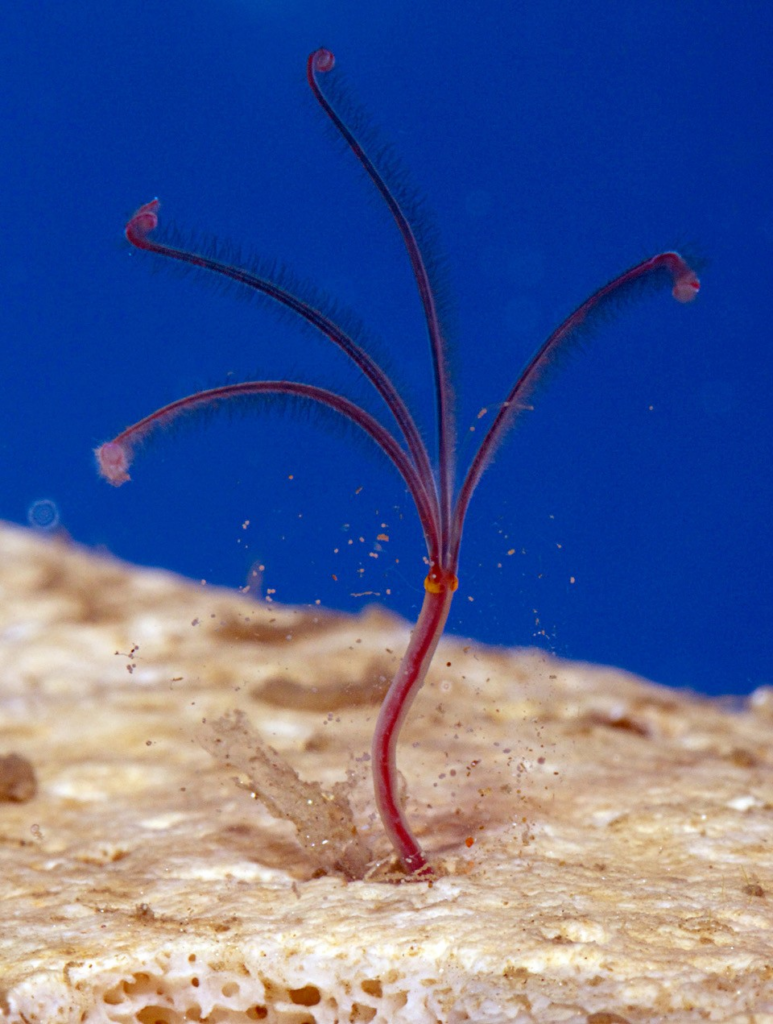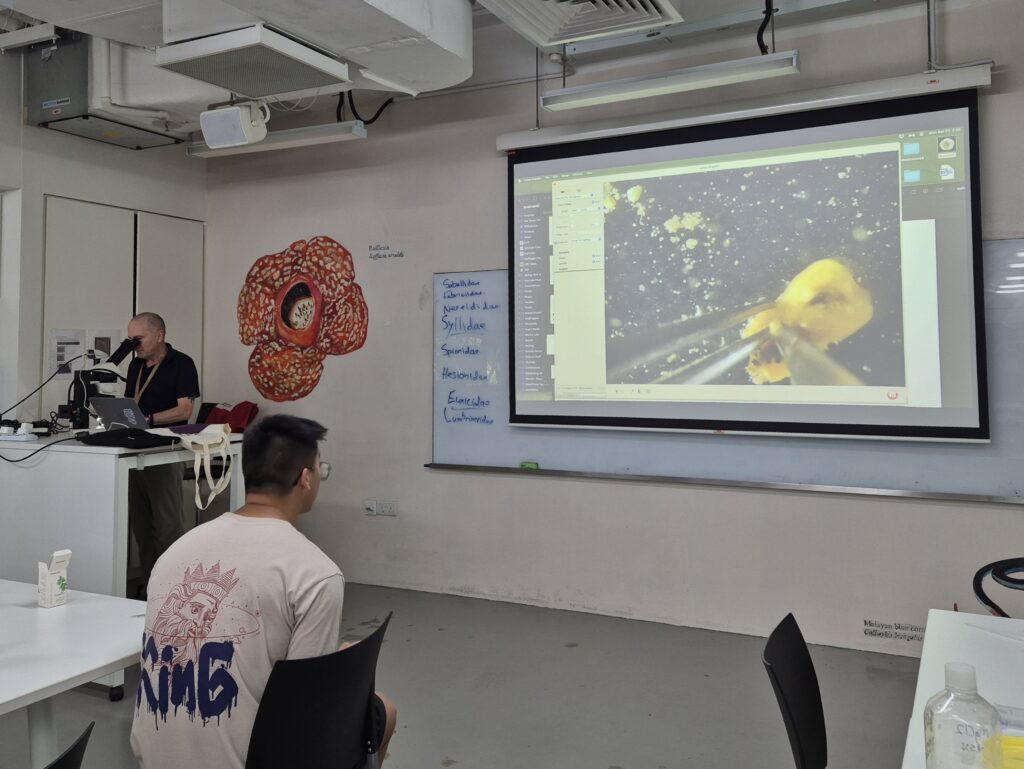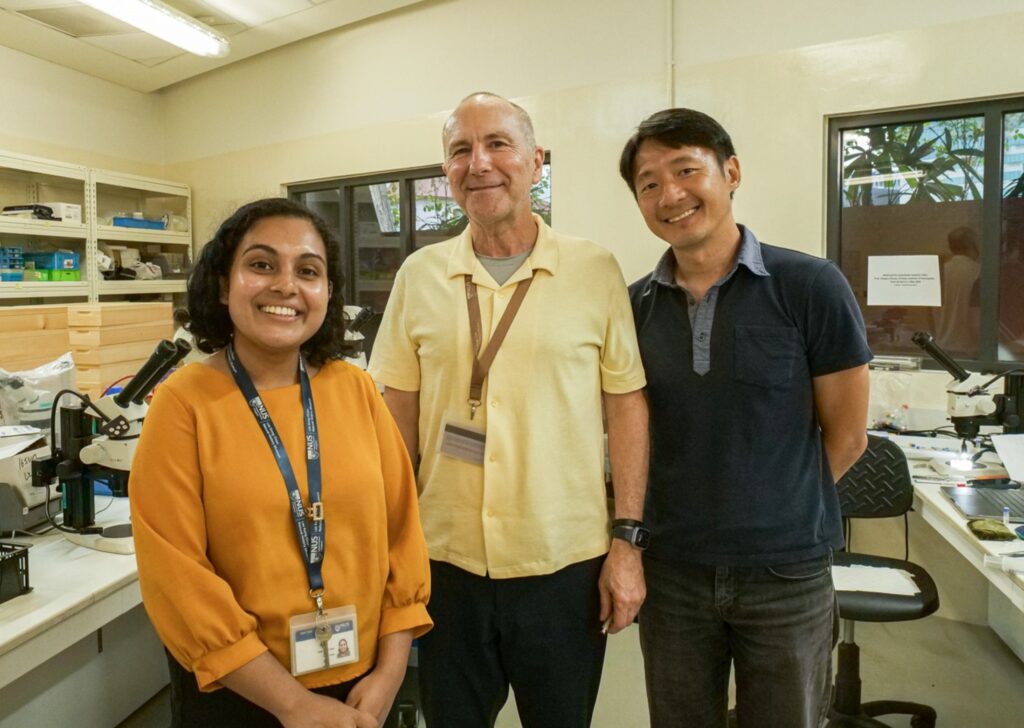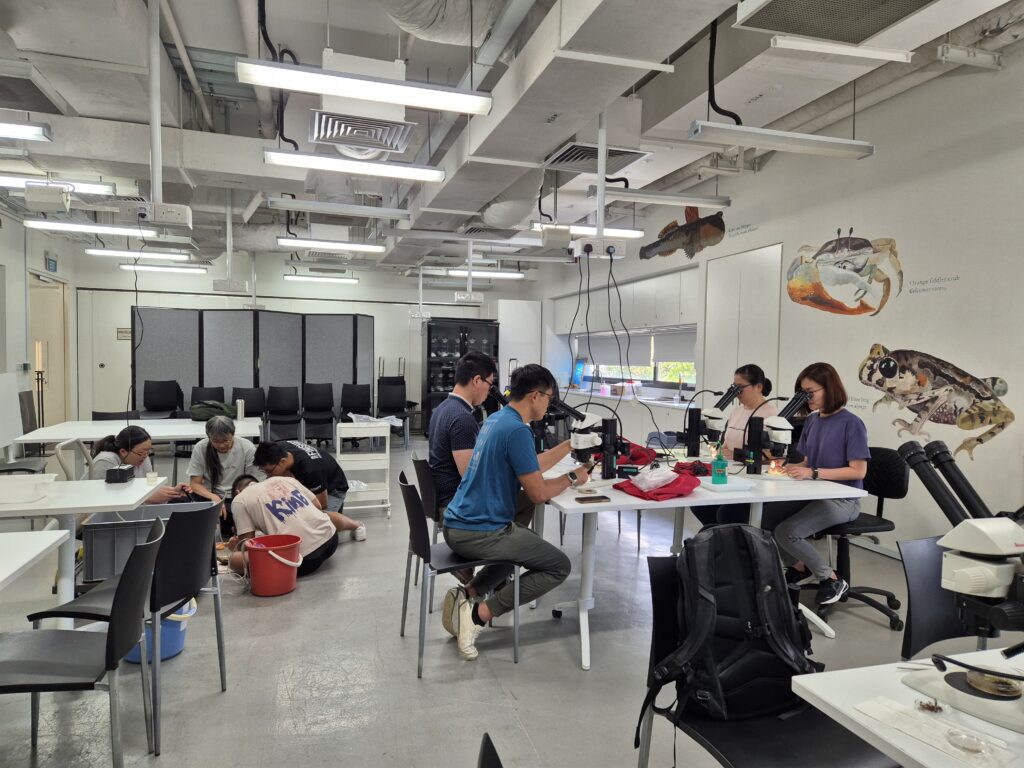Happy International Polychaete Day! An interview with Dr Gregory Rouse
Today, as we commemorate International Polychaete Day, we are privileged to have a chat with renowned annelid researcher, Dr Gregory Rouse, Professor of Marine Biology and Curator of the Benthic Invertebrate Collection at Scripps Institution of Oceanography at the University of California, San Diego. His recent visit to the Lee Kong Chian Natural History Museum (LKCNHM) from 22 April to 3 May 2024 provided an opportunity for us to get to know him better, explore his research and delve into the significance of these enigmatic creatures!
Why annelids?
Dr Rouse’s journey into the world of annelids began in childhood, shaped by moments spent with his father at the docks, and sparking a lifelong fascination with marine life. From those early experiences emerged a passion for marine biology, leading him to the University of Queensland in Brisbane, Australia. It was during his third year of study that he encountered marine invertebrates through one of his university courses, which he thoroughly enjoyed.
For his initial graduate work, he decided he wanted it to be on either microscopy or invertebrates, his two main interests. His research advisor had told him he could either work on crabs or polychaetes, and so he chose polychaetes. It was a decision as simple as that which set forth the butterfly effect leading him to study polychaetes for the next forty years or so. Dr Rouse has also worked on many other animal groups since then but mainly continues to work on polychaetes.
“Polychaetes are very abundant and diverse, and are integral in marine food webs, but they’re often ignored because they’re small and difficult to study,” Dr Rouse shared. “There needs to be more research done on their diversity. There are probably many, many more species that have not been discovered.”

Dr Rouse on an intertidal fieldtrip at Tanjong Rimau, Singapore. Photo credit: Tashfia Raquib
The public often holds a negative perception of worms, viewing them with disapproval or disgust, and they are often overshadowed by charismatic megafauna. However, Dr Rouse believes that by capturing the beauty and charm of polychaetes through photography, and highlighting the plethora of undiscovered species, public interest could be piqued, leading to a newfound appreciation for these fascinating animals.
Dr Rouse’s research
Throughout his career, Dr Rouse has made significant contributions to the field of marine biology, having described over 200 species, including one fish, the ruby seadragon. His research extends to the obscure—naming rare animals such as a group of bone-eating worms called Osedax.

A female Osedax lehmani! Photo credit: Gregory Rouse.
Dr Rouse is currently working on multiple projects and finds that many new technologies are useful in his research.

Dr Rouse examining a polychaete specimen under a microscope during his workshop conducted at LKCNHM. Photo credit: Tashfia Raquib
“I like to use new technologies. As a technology evolves, I try it. We use microCT x-ray scanning to make three-dimensional models, and I think it is amazing for anatomical studies. We also use photogrammetry to build three-dimensional models of hydrothermal vents and whale falls (whale fall habitats are productive localised ecosystems for deep-sea organisms, such as Osedax),” Dr Rouse explained.
The importance of museums
Dr Rouse also stressed the crucial role museums play in advancing scientific knowledge.
“Collecting trips are snapshots of that present moment,” Dr Rouse explained. “With so many species being discovered, they can’t all be named easily and quickly. Museums help to document and store these samples for the future. Though many samples collected today may not be examined in detail for another ten or more years, if they are properly photographed, DNA-sequenced, and maintained in the collections, they provide valuable information for future research.”

Dr Gregory Rouse, Ms Tashfia Raquib, and the Deputy Head of LKCNHM, Assoc Prof Huang Danwei, in one of the Museum’s research laboratories.
Institutions like LKCNHM and Scripps Institution of Oceanography also serve as platforms for collaboration and knowledge exchange, enabling researchers like Dr Rouse to delve deeper into their fields of study. By fostering such partnerships, museums contribute not only to scientific discovery but also to public engagement and education.
Dr Rouse‘s visit to LKCNHM
Dr Rouse’s recent visit to LKCNHM marks a continuation of his collaborative efforts. Beyond sharing research and curation methods with Ms Tashfia Raquib, LKCNHM’s new curator of worms, his engagement with our Museum staff extended to fieldwork, including scuba diving and intertidal sampling, and even a short workshop on the identification and processing of polychaete specimens.

Participants at a workshop conducted by Dr Rouse at LKCNHM. Photo credit: Tashfia Raquib
Plans for future collaborations such as updating the checklist of polychaetes in Singapore are also in the making!
As we celebrate International Polychaete Day, Dr Rouse’s insights serve as a reminder of the beauty and importance of these often-overlooked animals. Through his work and passion, he encourages us to embrace the wonder of polychaetes and their vital role in our marine ecosystems.

